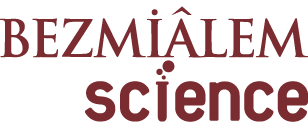ÖZET
Amaç:
Bu çalışmanın amacı hastanede yatan ve kemoterapi tedavisi gören farklı tanılı kanserli çocukların üst ekstremitelerinin propriosepsiyon ve kinestezi fonksiyonlarını incelemektir.
Yöntemler:
Bu çalışmaya çocukluk çağı kanserli 213 (101 kadın, 112 erkek) çocuk katılmıştır. Üst ekstremitelerin propriosepsiyon ve kinestezi duyuları hastane ortamında değerlendirilmiştir. Klinik bir değerlendirme olan pozisyon hissi propriyosepsiyonu değerlendirmek için kullanılmıştır. Kinestezi duyusunu değerlendirmek için Duyu Bütünleme ve Praksis Testlerinin kinestezi alt testi kullanılmıştır. Tanı kriterlerine göre ortalama değerleri karşılaştırmak için Kruskal- Wallis testi kullanıldı. İki değişkenli korelasyonlar için Spearman korelasyon katsayısı kullanıldı ve istatistiksel anlamlılık p<0,05 olarak kabul edildi.
Bulgular:
Tanı tiplerine göre propriosepsiyon skorları ve kinestezi ortalamaları arasında anlamlı fark yoktu (p>0,05). Propriosepsiyon puanlarında tanı türlerine göre en düşük puan karsinoma tanı grubunda iken en yüksek puan lenfoma tanı grubunda görülmüştür. Kinestezi açısından en fazla etkilenen lenfoma tanı grubu iken en az lösemi tanı grubu etkilenmiştir. Ayrıca propriosepsiyon ve kinestezi skorları arasında anlamlı bir ilişki bulunamamıştır (p>0,05). Ancak sağ ve sol ekstremite propriosepsiyon skorları arasında anlamlı bir ilişki bulunmuştur (p<0,01, r=0.50).
Sonuç:
Bu çalışma kemoterapi alan çocuklarda propriosepsiyon ve kinestezi sorunlarının varlığını ortaya koymuştur. Bu alanlara yönelik müdahale programlarının planlanması ve duyusal parametrelerin detaylı olarak değerlendirilmesi ileride yapılacak çalışmalar için faydalı olacaktır.



